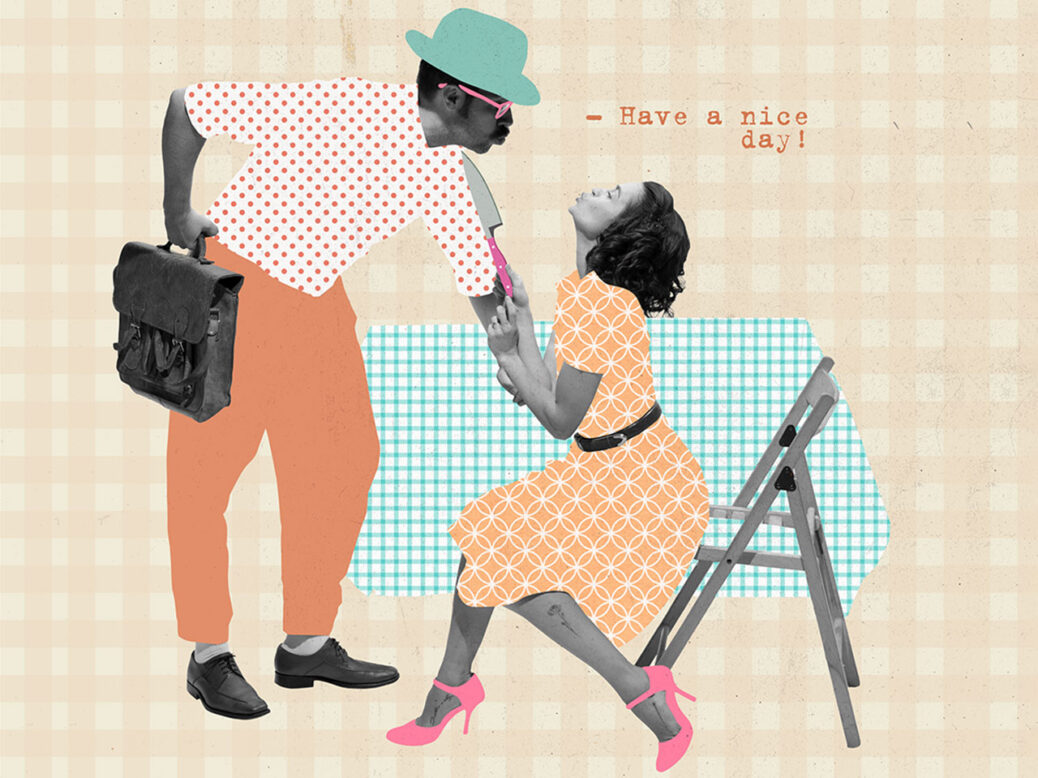
The liberal aesthetics that dominated social media in the 2010s have receded to make way for an internet that bends towards a narrow, small-c conservatism. Tradwives, homesteaders, even standalone trends that portray womanhood as archetypally hyper-feminine and girly, have abounded on TikTok and Instagram in the last three years. We now know influencers like Hannah Neeleman (aka Ballerina Farm), Nara Smith and Estee Williams can draw in millions of fans and tens of millions of views by sharing a glossed-over version of reality where men provide, women cook, clean and care for children and silly ideas about 21st-century feminism never enter the picture.
The success of this content has been dependent on its implicit arguments – sometimes even suggesting that the trad lifestyle empowers women and that performing for the male gaze is a means to exercise their femininity. Many creators feel the need to promote the anti-feminist view of womanhood using the cover of left-wing, progressive language. But there has been a concerning shift in recent months. Now the (admittedly) thin veil has been lifted, and implicit conservative aesthetics have given way to blatant ones. This has been especially stark in the sudden rise of “old money”.
What is it? The comparatively quaint, simple lifestyles that have been popular lately on TikTok are gone, in favour of the aesthetics of New England, Lake Como and dynastic wealth. Now the influencers and brands are instructing their followers in how to live an “old-money lifestyle” – changing everything from their fashion choices, home design, holiday locations and social activities to prioritise overt lavishness, opulence and glamour.
Videos relating to this trend easily rack up millions of likes and views, featuring thin white women hanging off men in suits at country manors and in the halls of European mansions. Though pitched at both men and women, the message is more or less the same: that the end goal is the single-income nuclear family, housed in a staffed suburban mansion, wearing expensive rocks and watches and driving big, expensive cars. It’s no coincidence that, after a decade of hoodies and graphic tees, it’s the new look de jure being adopted and pushed by the main players in the pro-Trump youth wing.
It isn’t just an aesthetic trend: there are now swathes of etiquette “coaches” and “manners consultants” charging women to learn how to be prim and restrained, advising on how to change their behaviour – from how they sit and eat to even how they look at a painting in a museum. Their content often comes with side-by-sides of a smiling, louder woman to demonstrate what you shouldn’t be (eg: classless, attention seeking) with captions pushing a Madonna-whore complex such as: “You can’t act like Marilyn Monroe and expect to be treated like Aubrey Hepburn.” Whole classes are dedicated to subjects like “Deportment & Posture”, “Graceful Greetings & Introductions”, “Social Events (Royal Ascot, Afternoon Tea, Cultural Variations)” and “Hostessing”.
Of course, this advice is rarely meaningful, amounting to little more than “sit up straight and talk less”. But workshops, multi-week courses and private consultations can cost hundreds (sometimes thousands) where women are ultimately taught the obvious ways to behave like a demure housewife.
The sudden appeal of old-money aesthetics is part of the reactionary moment. Right-wing creators – emboldened by the rightward lurch of mainstream politics – no longer need to obscure their aims with neutral, pseudo-feminist messages. But its popularity also speaks to the desperation of younger generations who we increasingly see seeking ways to leapfrog their socioeconomic circumstances into a better life. The aesthetics aren’t just escapism, but an aspirational game plan.
But, beyond serving as pure fantasy, who does this advice actually help? No amount of straight spines and muted clothing will transport the average person consuming this content into a life with the promise of happiness (and where their problems magically disappear). Nor is bad posture and a poor knowledge of table settings the core obstacle holding these women back from the life of their dreams. The irony is that even the performance of this kind of wealth is still only reserved for the wealthy. In response to one especially viral video of what appeared to be a group of trust fund kids “partying” at Lake Como, the journalist Louis Pisano explained: “None of this is casual or real… it’s an “Instagram club” where if you get accepted you get to pay to dress up and make old money content with them.” Even the facsimile of luxury is only accessible to those who can afford to pay.
It appeals because so many look around and feel dissatisfied with what the world has given them. But buying into the false idea that aspirational regressivism is the only avenue out will only take us further from the comfort we are ultimately seeking. We continue to delude ourselves that the longer we turn a blind eye to the transparent wolf, this time in mink fur’s clothing.
[See more: Labour’s “old right” has been reborn]



